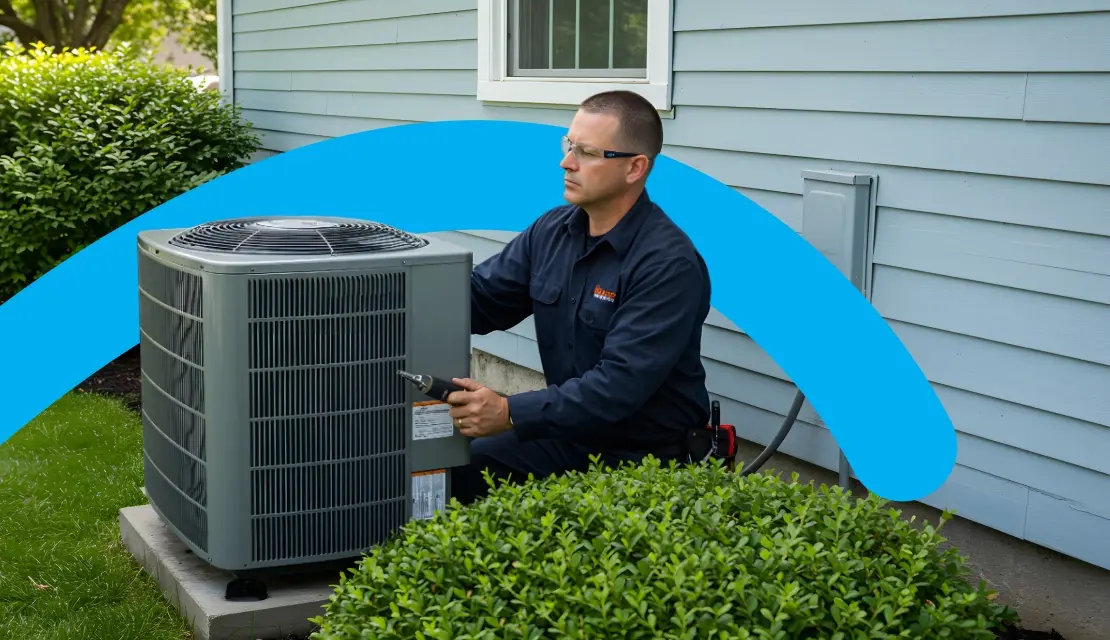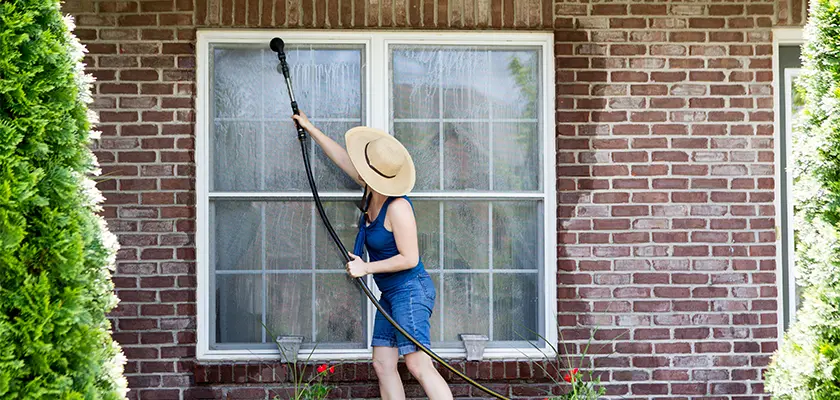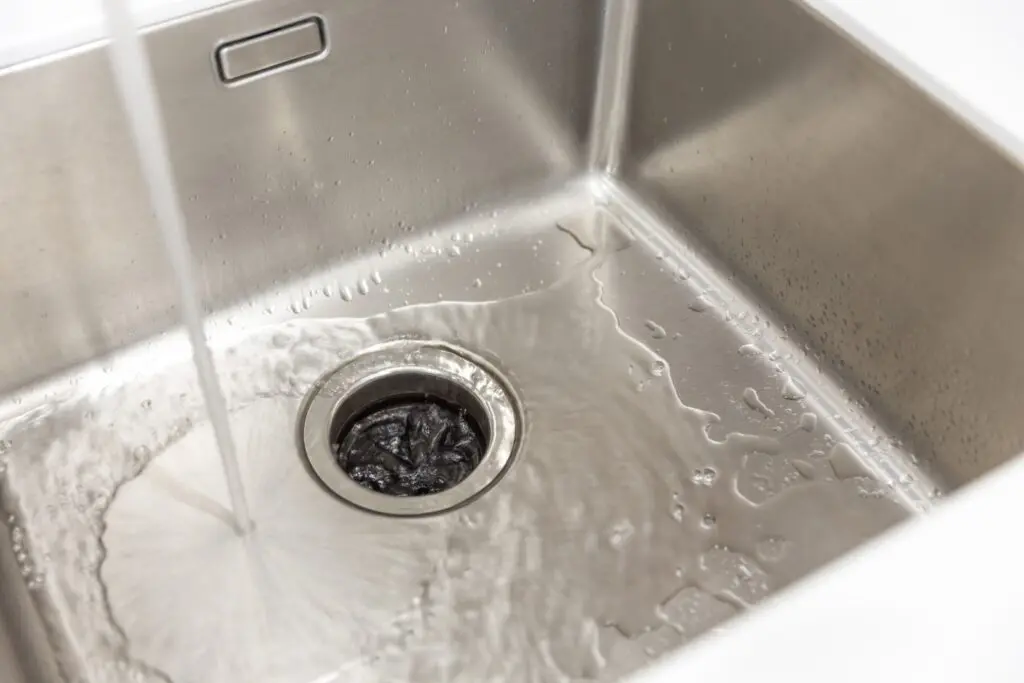Buying a home is exciting. But maintaining it afterward? Not so exciting, but ten times more important. Also, smart homeowners know that a regular home maintenance checklist is the best way to dodge surprise repair bills.
Owning a home means stepping into a world of hidden costs, and maintenance quickly climbs to the top of that list. According to Bankrate’s Hidden Costs of Homeownership Study, Americans spend over $8,800 a year on average just to keep their homes running.
First-time buyers, especially those coming from rental properties, often overlook this upkeep part. When something broke in the apartment, the landlord took care of it. But in your own home? That broken furnace, leaky roof, or fried dishwasher is all on you.
And it is not just the big repairs. Even routine maintenance, which includes cleaning gutters, replacing air filters, and sealing windows, can add to the costs quickly.
This guide isn’t about overwhelming to-dos. It is a friendly nudge to prep, inspect, and act at the right time every season. Curious what needs attention this spring, summer, fall, and winter? Let’s begin!
Why Is a Regular Home Maintenance Checklist Necessary?
A well-prepared checklist takes away the worry that keeps homeowners like you up at night. Instead of wondering if your furnace will make it through winter, you’ll know exactly how it’s doing. This organized way of caring for your home gives you confidence instead of stress.
Fixing small things costs way less than emergency repairs. When you clean your gutters before storms or check your air conditioner before summer, you are protecting your investment.
Regular upkeep also means your family lives more safely. Your smoke detectors work, your stairs are secure, and your electrical system is reliable. Take care of things today, and avoid expensive surprises later.
What Tools and Supplies Do You Need For Maintaining Your Home?
Before you start with the regular upkeep, make sure your toolbox and your supply shelf are stocked with the right gear. Having a go-to set of essentials makes the process faster, safer, and a lot less stressful.
Tools Checklist
- Cordless Drill (with various bits)
- Step Stool
- Pliers
- Paint Brushes and Rollers
- Caulking Gun
- Flashlight or Headlamp
- Voltage Tester
- Safety Gear (protective eyewear, gloves, dust mask)
- Wrenches (adjustable)
- Utility Knife
- Screwdrivers (flathead and Phillips)
- Level
- Hammer
- Gardening Tools (rake, pruning shears, shovel, lawnmower)
- Plumbing Tools (pipe wrench, plunger)
- Tape Measure
- Ladder
Materials or Supplies Checklist
- Sandpaper
- Wall Anchors and Fasteners
- Drop Cloths
- Duct Tape and Electrical Tape
- Weather Stripping
- Paint and Primer
- Caulk
- Garden Supplies (mulch, fertilizer, soil)
- Plumber’s Tape
- Light Bulbs (various types and wattages)
- Cleaning Supplies (sponges, cloths, all-purpose cleaners)
- Lubricants (e.g., WD-40)
- Nails and Screws (various sizes)
- Batteries (for smoke detectors, remotes, etc.)
Comprehensive Home Maintenance Checklist To Follow Every Season
Spring Season
Winter can take its toll on your home, even in milder climates. As the chill fades and flowers start to bloom, it is the perfect time to give your home some post-winter care and attention. Take a look at the spring home maintenance checklist to help you prepare for the months ahead:
- Get Your HVAC Spring Ready: Before switching to air conditioning, have a certified technician inspect your HVAC unit. A spring tune-up improves the system’s efficiency and helps prevent costly mid-season breakdowns. Many HVAC companies also offer spring discounts if you schedule early.
- Take a Safe Look at Your Roof: Snow, wind, and freezing temperatures may have damaged shingles or flashing. Use binoculars from the ground to look for visible wear, loose, curled, or missing shingles. Avoid climbing; professional roof inspections are safer and more thorough.
- Clear Out Winter’s Mess from Your Gutters: Ice and debris may have caused sagging or blockage. Clear out leaves, check for leaks, and confirm that downspouts direct water away from your foundation.
- Inspect Concrete Surfaces: Cracks in sidewalks, steps, and driveways may expand in warmer weather. Seal small gaps now before they become costly fixes.
- Check Seals and Storm Windows: Look for drafty areas, cracked caulking, or clogged storm-window drains to keep your home energy-efficient and protected from moisture.
- Fertilize and Prepare your Lawn: Apply spring fertilizer to encourage lush green growth before the summer heat sets in. Seed patchy grass areas, prep your soil, and plant seasonal blooms once frost risk is over.

Summer Season
Summer is all about sunshine and relaxation, but before you settle into vacation mode, give your home a quick seasonal check-up. Use this warm, dry weather to tackle outdoor repairs and indoor tune-ups while everything’s accessible and easier to inspect. Below is the regular home maintenance checklist you need to have for summer:
- Clear space around outdoor HVAC units: Overgrown grass or weeds around your HVAC unit can block airflow and strain the system. Clear a two-foot radius around it to help it run more efficiently and avoid unnecessary repairs later.
- Inspect and maintain your deck: Sun and rain can be hard on exposed wood. If your deck looks dull or patchy, summer is a great time to apply fresh stain or sealant. While you’re at it, check for loose boards or nails and sand down splinters for safer outdoor hangouts.
- Power wash siding and check for damage: Warm weather is perfect for washing vinyl, wood, or fiber cement siding. As you clean, scan for cracks, soft spots, or signs of mildew that might need attention before they worsen.
- Look over the foundation and crawlspace: Summer storms can reveal water issues around your foundation. Inspect for cracks or signs of moisture, and check crawlspaces for dampness after heavy rain.
- Test your irrigation system: Run your sprinklers through each zone and look for leaks, broken heads, or uneven coverage. Leaks in underground pipes or fittings can waste water and drive up your bill. The Environmental Protection Agency (EPA) offers great tips for smart irrigation maintenance, definitely worth a look if you use automatic systems.
Fall Season
Before you get swept up in cozy weekends filled with football, flannel, and fall festivities, block out a few hours to prep your home for the colder months ahead. These regular home maintenance tasks can save you trouble and money when fall rolls in.
- Schedule a heating system tune-up: Call a certified HVAC professional to inspect the unit and make sure it’s running efficiently before temperatures drop. A quick servicing now could prevent a major breakdown in the dead of winter.

- Shut off and drain exterior faucets: If your home doesn’t have frost-free hose bibs, turn off the water supply and drain any remaining water to avoid frozen pipes. Coil up hoses and store them inside to keep things neat and protected.
- Get your chimney inspected: Whether you use a wood stove or a traditional fireplace, chimney maintenance is a must. Have it professionally cleaned and inspected before lighting that first fire. The Chimney Safety Institute of America reports over 22,000 chimney fires annually, so don’t let yours be one of them.
- Clear the roof and gutters: Leaves and debris can trap snow and water, leading to ice dams and leaks. Clean your gutters thoroughly and check your roof for damage. If you are in a single-story home, this might be a safe DIY job with a helper.
- Check weather stripping and seals: Feel a draft around doors or windows? Your weather stripping may be worn or compressed. Replace any loose or damaged sections now to keep cold air out and heating costs down later.
- Regrade low spots near your foundation: Walk around your home’s perimeter and fill in any low areas that could collect rain or melting snow. Improper drainage next to the home’s foundation can result in leaks, basement dampness, or even structural issues over time.
Winter Season
Cold temperatures and shorter days may tempt you to stay indoors and ride out the season, but your home needs a little care to weather the cold months. Here is a regular home maintenance checklist for winter to avoid expensive surprises later:
- Prevent roof ice build-up: Ice forming along the edge of your roof can trap melting snow, causing water to seep under shingles and leak into your home. These ice dams are often caused by poor water pipe insulation or ventilation. If possible, hire an expert to evaluate and resolve the problem so it doesn’t return in the future.
- Seal out cold air leaks: Drafts sneaking in around doors and windows can make your heating system work overtime. A quick test: light incense and move it near seams, if the smoke wavers or is pulled in, you’ve found a leak. Seal the openings using caulk or weatherproof tape to maintain indoor comfort and reduce heat loss.
- Make sure your sump pump works: Don’t wait until spring thaw to find out your sump pump isn’t working. Pour a small amount of water into the pit and check if it kicks on. Also, ensure the backup battery is charged and functional in case of a power outage.
- Shut foundation vents: Crawl space vents that are useful in warmer months should be closed during winter to help retain heat indoors and prevent pipes from freezing.
- Protect your A/C equipment: Outdoor air conditioners should be shielded from snow and ice to extend their lifespan. Use a cover made for your unit, or securely wrap it with a waterproof tarp. For window units, remove and store them indoors or insulate them with a tight cover.
Monthly and Annual Home Maintenance Tasks You Shouldn’t Skip
Even with seasonal upkeep covered, minor problems can still go unnoticed. So, it’s worth adding a few monthly and yearly maintenance habits into your routine to keep your home systems efficient and your space safe.
Monthly Maintenance Tasks
Airflow & Filters
Swap or dust your furnace filter each month to reduce dust and help your HVAC run smoothly. Vacuum out heat vents and registers, and ensure both indoor and outdoor air intakes are unobstructed.
Water & Plumbing
Check your water softener level and top up if needed. Clean the garbage disposal using ice cubes and baking soda, and clear tub or sink drains to prevent backups.
Safety & Power
Test smoke and carbon monoxide detectors and ground‑fault circuit interrupters (GFCIs outlets. Make sure your fire extinguishers are fully charged and haven’t expired. Look over electrical cords for signs of wear.
Annual Maintenance Tasks
- Dryer vent cleaning: Lint in the exhaust line is a hidden fire risk. Even with regular lint trap cleaning, the full vent needs attention.
- Garage door maintenance: Spray lubricant on the torsion springs and hinges to avoid squeaks and extend hardware life.
- Water heater flush: Minerals settle at the bottom of the tank over time. A yearly flush helps improve heating speed and lowers energy use.
- Termite inspection: Especially in warmer regions, catching termite activity early can save serious structural repair costs.
- Septic system inspection: A professional can gauge whether it’s time to pump the tank and check for signs of wear.
- Fire extinguisher review: Confirm that each unit is fully charged and hasn’t expired. Replace or recharge as needed.
- Operate water shut-off valves: Open and close fixture valves to ensure they’re not frozen from lack of use.
- Dust fan vents: Moist bathroom air and dust don’t mix well; cleaning the fan keeps airflow strong and mold out.
- Fridge coil cleaning: Built-up dust makes your fridge work harder. Clean coils help with cooling and energy savings.
Keep Your Home Standing Strong for the Years Ahead
Homes age just like we do, and a little care now keeps yours going strong for decades. Ticking off your regular home maintenance checklist can help you stay ahead of the stuff that can cause real trouble later. A bit of effort every season can keep your home safe, energy-efficient, and comfortable. Whether you are staying long-term or thinking ahead to resale, sticking with the basics pays off in more ways than one.
Frequently Asked Questions About Regular Home Maintenance
What does routine maintenance check mean?
A routine maintenance check just means staying on top of the little things, like cleaning, quick inspections, or basic tune-ups, to keep your home running properly without disruptions. Depending on what it is, you might do it every day, once a month, or a few times a year. It is a very meaningful habit that helps things last longer at your home and keeps bigger problems away.
What does regular maintenance include?
Regular maintenance includes planned, ongoing tasks like inspections of your home’s key systems, such as HVAC, electrical, and plumbing. Other things include changing furnace filters, cleaning gutters, checking for roof leaks, cleaning windows, etc. It is all about spotting and fixing minor issues before they turn into major problems.
How much should I set aside for home maintenance?
A smart way to plan for upkeep is to set aside 1% to 4% of your home’s value each year. Suppose, if your home is worth $250,000, try to save somewhere between $2,500 and $10,000. Keeping a separate maintenance fund makes it easier for you to stay prepared, whether it’s for a new water heater or just routine fixes.
Disclaimer: The information in this article is intended to provide guidance on the proper maintenance and care of systems and appliances in the home. Not all the topics mentioned are covered by our home warranty plans. Please review your home warranty contract carefully to understand your coverage.
Our blogs and articles may link to third-party sites that offer products, services, coaches, consultants, and/or experts. Any such link is provided for reference only and not intended as an endorsement or statement that the information provided by the other party is accurate. We are not compensated for any products or services purchased from these third-party links.






